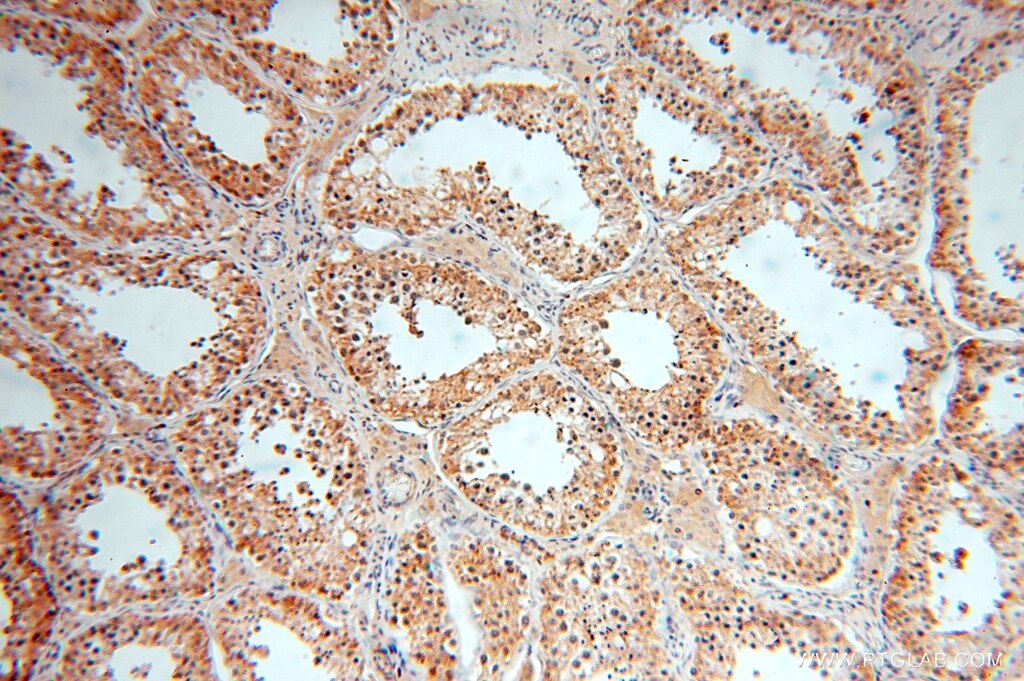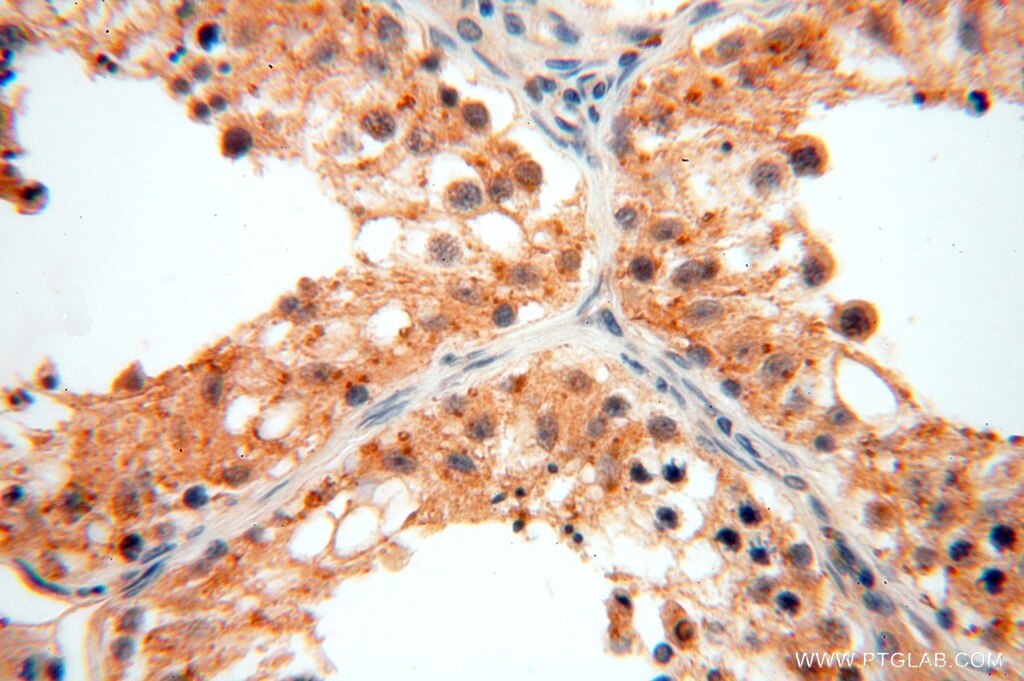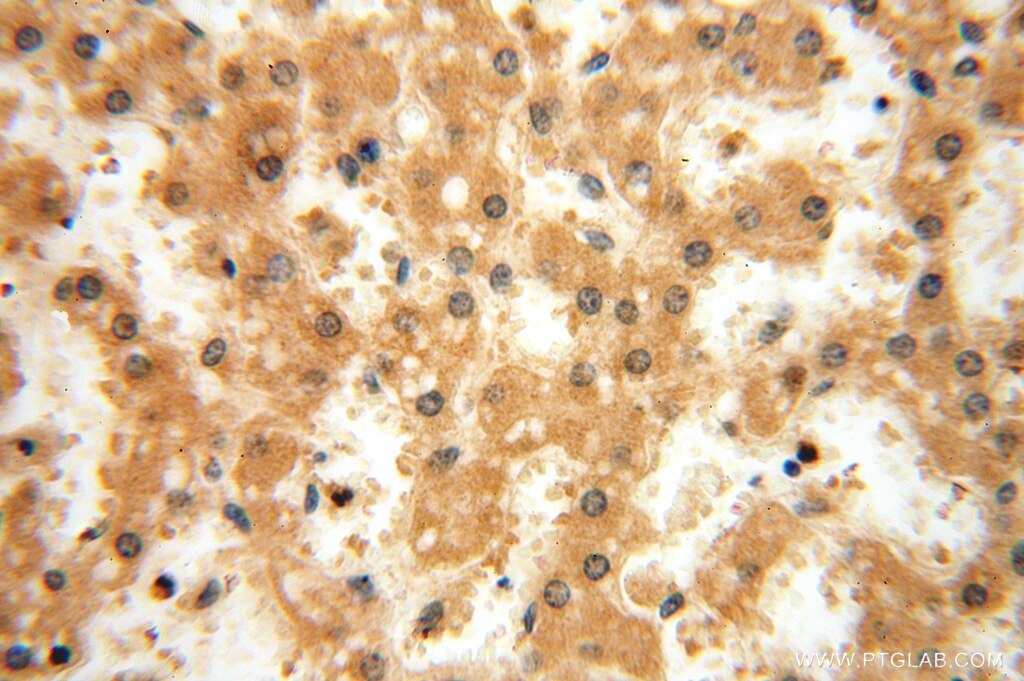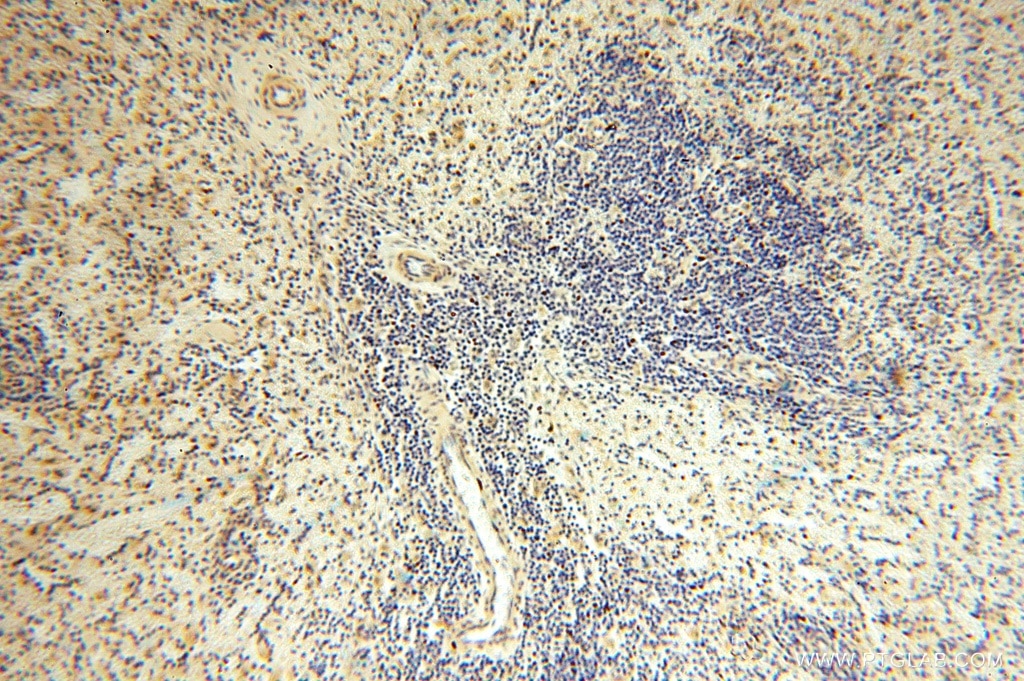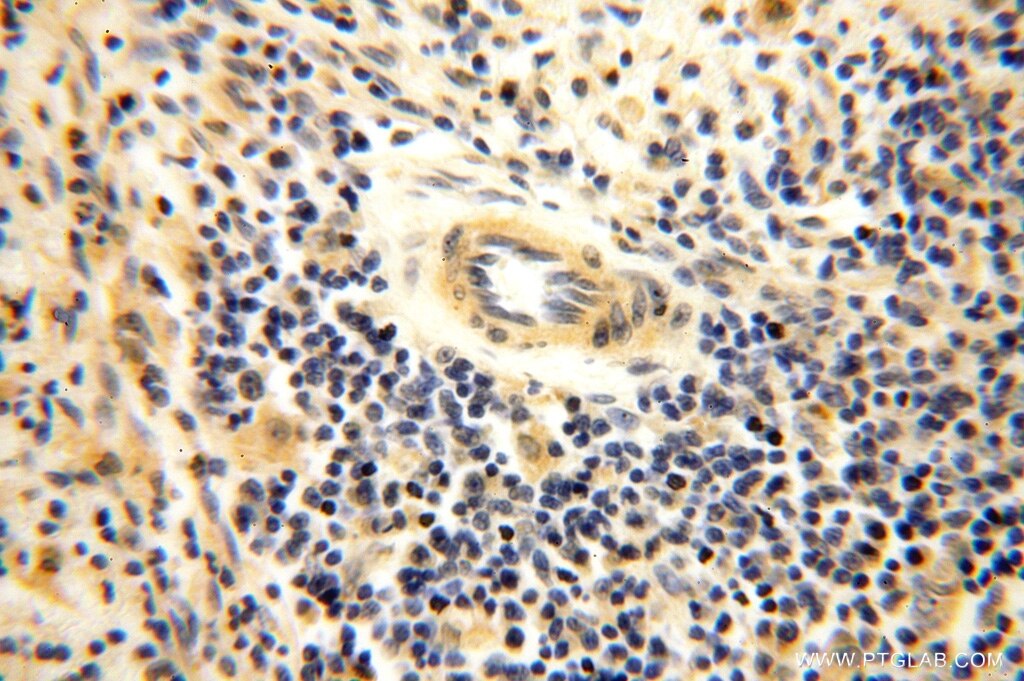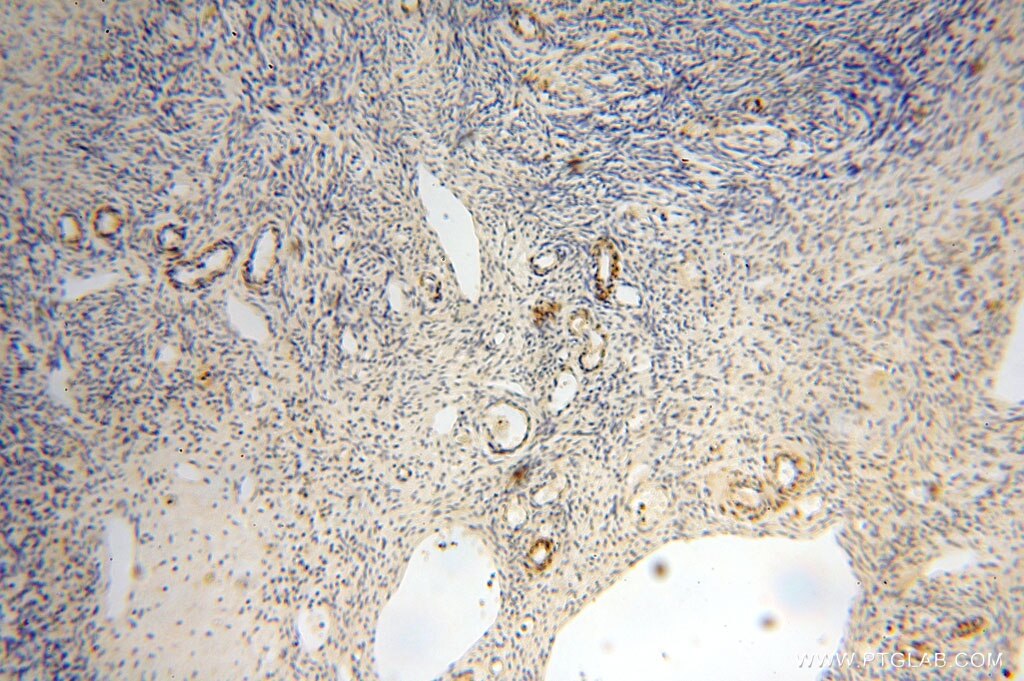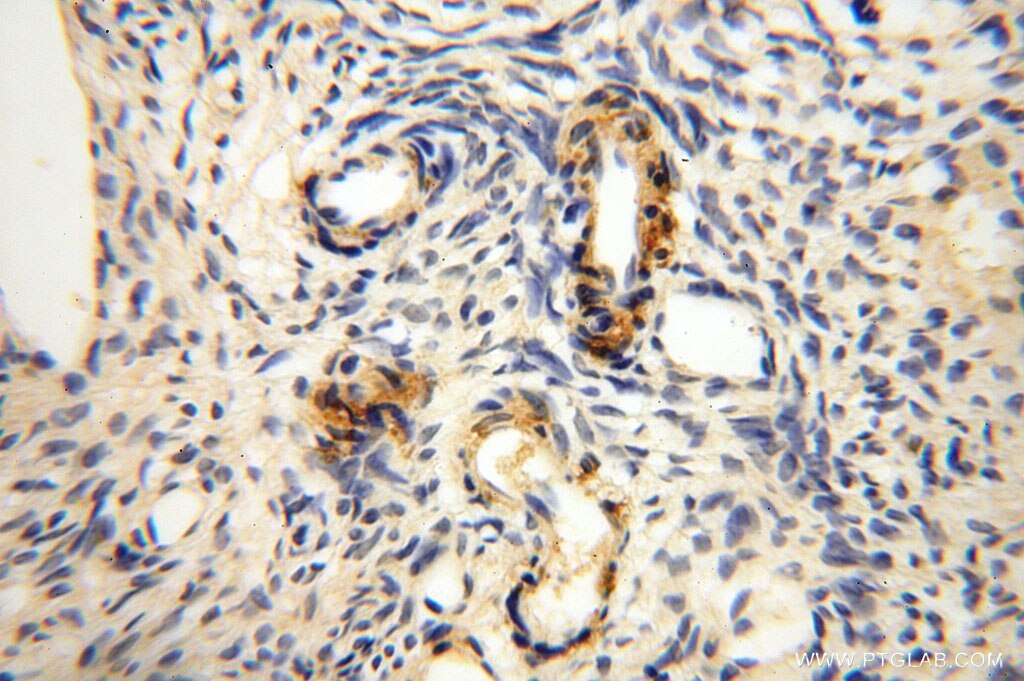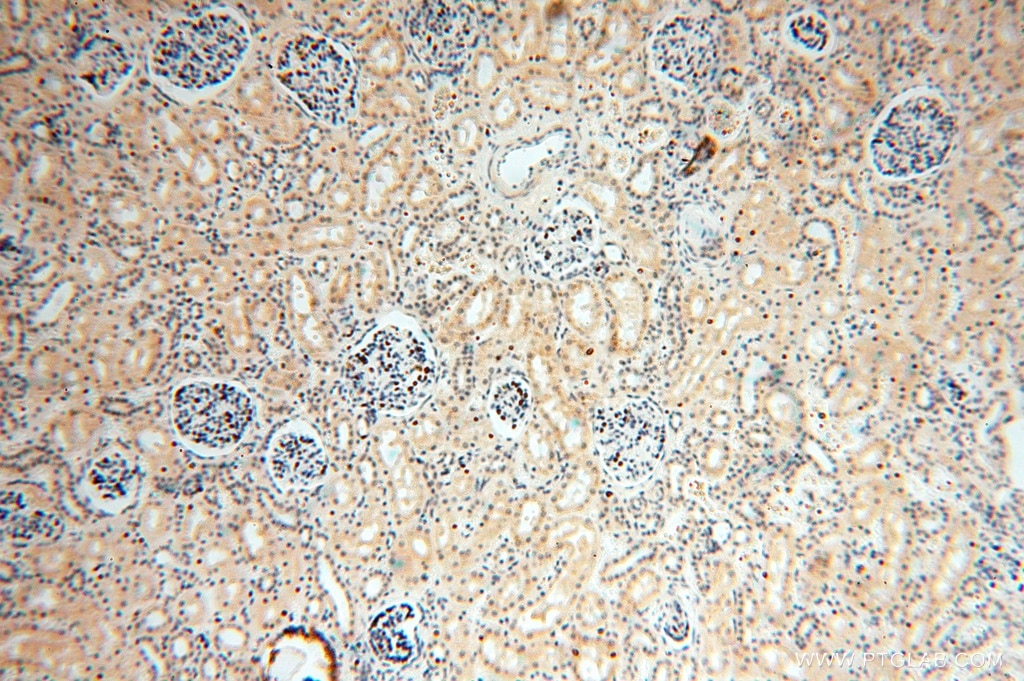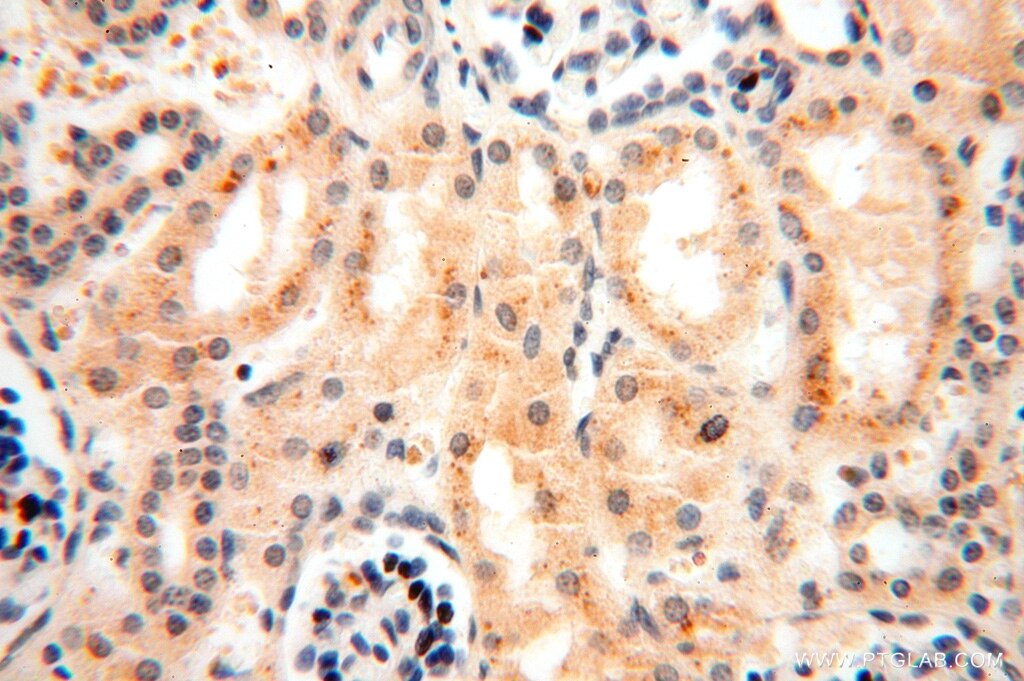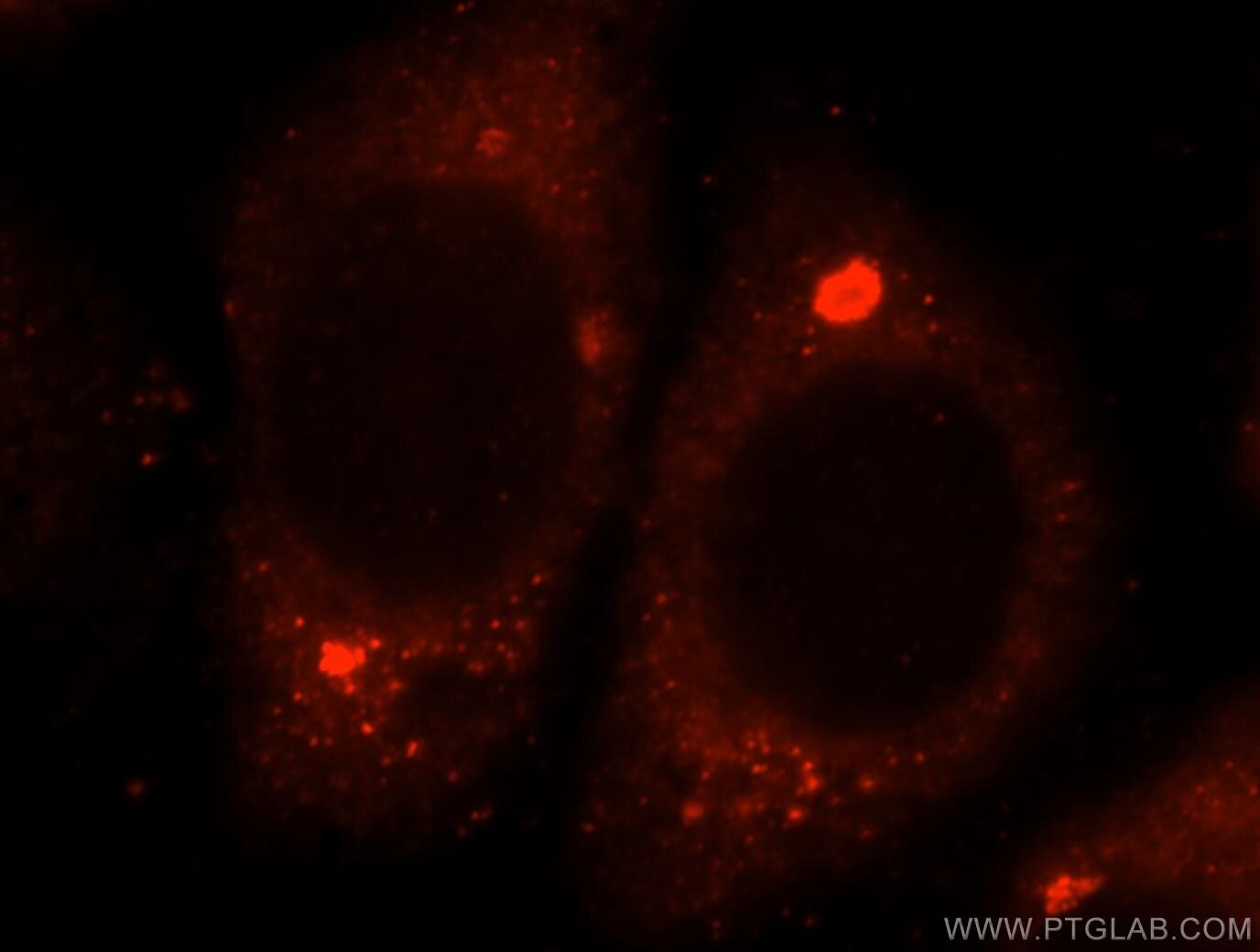GTDC1 Polyclonal antibody
GTDC1 Polyclonal Antibody for IF, IHC,ELISA
Host / Isotype
Rabbit / IgG
Reactivity
human, mouse, rat
Applications
WB, IHC, IF,ELISA
Conjugate
Unconjugated
Cat no : 16666-1-AP
Synonyms
Validation Data Gallery
Tested Applications
| Positive IHC detected in | human testis tissue, human kidney tissue, human liver tissue, human ovary tissue, human spleen tissue Note: suggested antigen retrieval with TE buffer pH 9.0; (*) Alternatively, antigen retrieval may be performed with citrate buffer pH 6.0 |
| Positive IF detected in | HepG2 cells |
Recommended dilution
| Application | Dilution |
|---|---|
| Immunohistochemistry (IHC) | IHC : 1:20-1:200 |
| Immunofluorescence (IF) | IF : 1:10-1:100 |
| It is recommended that this reagent should be titrated in each testing system to obtain optimal results. | |
| Sample-dependent, Check data in validation data gallery. | |
Published Applications
| WB | See 1 publications below |
Product Information
16666-1-AP targets GTDC1 in WB, IHC, IF,ELISA applications and shows reactivity with human, mouse, rat samples.
| Tested Reactivity | human, mouse, rat |
| Host / Isotype | Rabbit / IgG |
| Class | Polyclonal |
| Type | Antibody |
| Immunogen | GTDC1 fusion protein Ag10145 |
| Full Name | glycosyltransferase-like domain containing 1 |
| Calculated Molecular Weight | 292 aa, 34 kDa, 53 kDa |
| GenBank Accession Number | BC061699 |
| Gene Symbol | GTDC1 |
| Gene ID (NCBI) | 79712 |
| RRID | AB_1851177 |
| Conjugate | Unconjugated |
| Form | Liquid |
| Purification Method | Antigen affinity purification |
| Storage Buffer | PBS with 0.02% sodium azide and 50% glycerol pH 7.3. |
| Storage Conditions | Store at -20°C. Stable for one year after shipment. Aliquoting is unnecessary for -20oC storage. 20ul sizes contain 0.1% BSA. |
Protocols
| Product Specific Protocols | |
|---|---|
| IHC protocol for GTDC1 antibody 16666-1-AP | Download protocol |
| IF protocol for GTDC1 antibody 16666-1-AP | Download protocol |
| Standard Protocols | |
|---|---|
| Click here to view our Standard Protocols |
Publications
| Species | Application | Title |
|---|---|---|
Sci Rep A putative UDP-glycosyltransferase from Heterorhabditis bacteriophora suppresses antimicrobial peptide gene expression and factors related to ecdysone signaling. |
